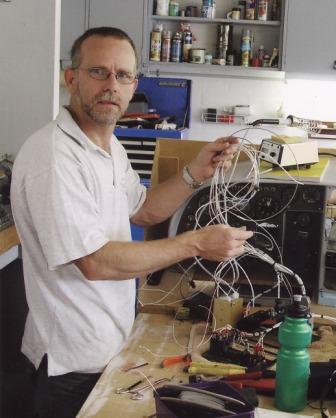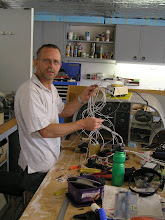This first shot shows a print of an existing spinner I liked the design of. I scaled it up to 10" dia and 12" long. this was glued to a piece of ply and a template cut as a guide to working the foam later on. Also in this photo is the 10" base plate I used. This was accurately centered and attached to my little home lathe.

Next I stacked a pile of polyurethane foal 12"high attaching them with either hot glue or aerosol foam filler. Both of these proved to be a poor choice as the elasticity played havoc with tooling and sanding. It was later suggested (by a FRP instructor) to use a small amount of auto body filler as an adhesive.
Here you can see I have partially finished working the foam. In the foreground you can see the template.

The finished bare foam spinner. Doesn't it look great. After this I filled the pores and any gaps with household plaster and sanded to a smooth finish.

Duct tape as a release agent, trying not to overlap is almost impossible. I learned to live with a little imperfection.

Glass cloth wetted out and cut on a template made out of builders plastic. 2 of these were made of 4oz cloth but in hindsight it turned out a little thin. Next time I'll try 6oz. {"Experimental = Education & Recreation"}

The finished bare foam spinner. Doesn't it look great. After this I filled the pores and any gaps with household plaster and sanded to a smooth finish.

Duct tape as a release agent, trying not to overlap is almost impossible. I learned to live with a little imperfection.

Glass cloth wetted out and cut on a template made out of builders plastic. 2 of these were made of 4oz cloth but in hindsight it turned out a little thin. Next time I'll try 6oz. {"Experimental = Education & Recreation"}








No comments:
Post a Comment